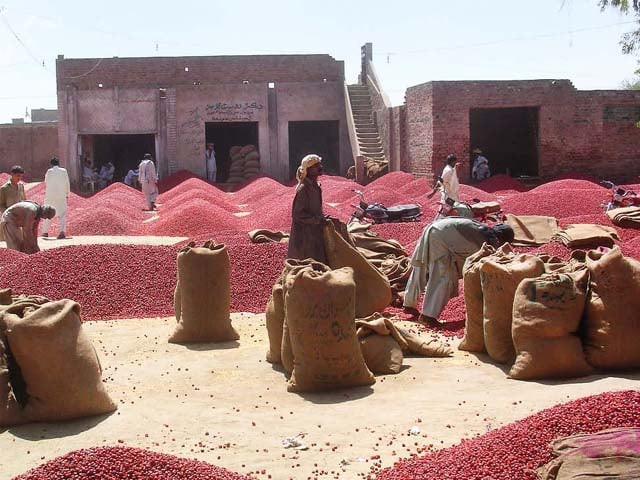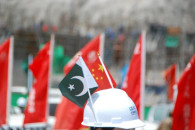Chilli shortage set to sting consumers
Sindh’s red chilli production posts sharp decline due to serious water shortage and torrential rains during harvest.

Lower chilli output in the province has increased the crop’s price in wholesale and retail markets. The province accounts for over 65 per cent of the country’s overall chilli production, with an estimated 80,000 to 90,000 tons produced annually.
A target of 86,000 tons over an area of 43,000 hectares was set for red chilli for the current year. However, farmers in Umerkot, Mirpurkhas and Badin districts informed that due to shortage of water in the districts, the crop was cultivated on an area 40 per cent less than the target while heavy showers damaged the crop during the last week of October.
They suffered massive losses when rains damaged tens of thousands of gunny bags, filled with freshly picked chillies, which were lying in the open.
“As reports of the chilli harvest began to spread, wholesale traders and exporters rushed to the chilli growing areas of the province. However, most traders lost their purchased chilli to the rainfall in lower Sindh areas,” said Altaf Rind, a chilli grower in Kunri.
Prices of the new chilli crop have significantly escalated in the wholesale and retail markets on reports of lower production.
In Kunri, a town in Umerkot district which produces 70 per cent of Sindh’s overall chilli output, the price of the product has shot up from Rs6,500 to Rs8,500 per 40 kg.
“While earlier we used to get [yields of] 40 to 45 maunds of dry chilli per acre, due to water shortage the yield has reduced to 25 maunds,” said Saleem Araen, the former president of the Red Chilli Association, Kunri.
Talking to The Express Tribune, Umerkot Executive District Officer for Agriculture Ali Hyder Jarwar said that the market is receiving an average of 1,800-1,900 40kg bags daily, against an expected arrival of 2,500-3,000 bags.
Officials in the provincial agriculture department’s statistics wing estimate that red chilli output this year will be around 250,000 bags, against a target of 600,000 bags.
While the chilli growers are happy at the good price their crop has fetched this year, they pointed out some problems that continue to hurt economic potential of the red chilli including shortage of irrigation water, unnecessary import of chilli by local traders, lack of dehydration plants and absence of a chilli crop development policy.
“There is a huge market in the world for Pakistani red chilli and orders worth millions of dollars are placed by foreign importers for the commodity but because of the lack of a viable export policy, most of the orders go unattended,” said Majeed Nizamani, president of the Sindh Abadgar Board.
Published in The Express Tribune, November 14th, 2010.

















COMMENTS
Comments are moderated and generally will be posted if they are on-topic and not abusive.
For more information, please see our Comments FAQ